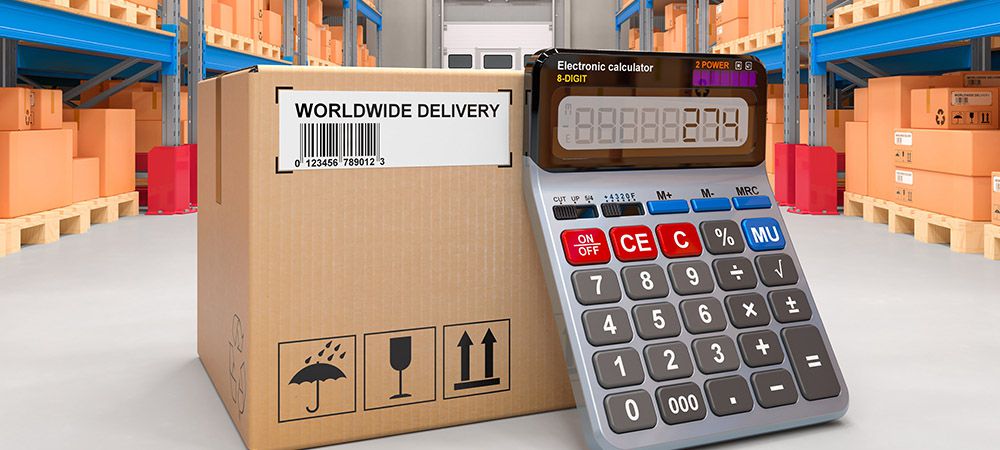With its ultra fast delivery speeds, air freight is an important part of the global economy. Whether you are ordering trendy, luxury goods from overseas or critical medical supplies are needed across the globe, air freight is what will get things where they need to be the fastest. However, air freight is not without its difficulties.
These difficulties and expenses get even more complicated when you are sending things internationally. To do this successfully, you must be aware of the regulations and documentation needed for shipping in both the country of origin and the country you are sending to. Here we will look at the benefits of air freight, when to use air freight, and other guidelines for international air freight to consider.
Are there Items that Cannot be Sent by Plane?
Air freight is a highly accommodating form of shipping with a wide range of goods able to be safely transported. This includes everything from clothing and food products to live animals and even other planes. However, there are definitely items that are restricted on flights mostly due to safety concerns. These include:
- Flammable items including lighters, matches, aerosol cans etc.
- Fireworks, fuses used for detonation and other explosives
- Compressed gas, dry ice, aerosol cans and other gasses
- Pesticides and other toxic items
- Biological or medical waste as they can contain harmful pathogens
When to Choose Air Freight
When it comes to international shipping, air freight is often the only option unless you are able to wait weeks for it to be shipped via boat. However, for as fast and convenient as it is to ship via air freight, it is also the most expensive way to ship items.
Therefore, air freight is often reserved for when speed is absolutely critical. Air freight is also a good option for fragile and valuable items as a shorter shipping time means less chance for damage to occur.
Air freight also allows for even the largest items to be shipped thanks to cargo planes specially designed for maximum storage.
International Air Freight Required Documents
All shipping methods no matter how near or far will require documents to help track contents and ensure a smooth trip through customs. When putting together these documents it is not only important to have all required paperwork, it must also be filled out properly.
Common documents needed for international air freight include: Bill of Lading, Export Packing List, Inspection Certificate, All Licensing and Inspection documentation. The exact documents you will need may vary depending on what you are sending, how big the shipment is, and where you are sending to.
To help ensure that all proper documentation is included, you should work with a trusted air freight broker. A broker works to connect you with carriers and also to ensure your shipments get to the carrier safely with all proper documents included.
Air Cargo vs Air Courier Cost

Exactly how your items are shipped and the type of craft they are shipped on is another consideration. The basic difference between these two types of shipping is that Air Cargo means your cargo will be transported in the cargo area of a passenger plane. An Air Courier will use a plane that is dedicated exclusively to cargo, no passengers.
This is an important difference to know as prices can be quite different. Air Cargo will likely look much cheaper upfront. With the flight’s costs largely being covered by passenger tickets, cargo can fly at a cheaper rate.
However, the price you are presented with for Air Cargo will only be for getting your shipment from one airport to the next. It will not include a variety of handling fees or the cost of transportation from the airport to the cargo’s final destination. Be mindful of this as you compare the two services. Typically, Air Cargo will only be the cheaper option if your cargo weighs over 300kg.
Keep Shipping Weight in Min
The weight of your shipment and the distance it travels are the main factors that go into determining the cost of air freight shipping. However, if you are not familiar with shipping weights, some terminology to know includes Gross Weight, Chargeable Weight, and Net Weight.
Net weight is the weight of the cargo on its own while gross weight is the weight of the cargo plus packing materials, container, pallets, etc. Chargeable weight is, as the name implies, the weight that you will be charged on.
With chargeable weight, you may either be charged based on the gross weight (volumetric weight) or the dimensional weight. Dimensional weight takes into consideration how much space your shipment takes up. The dimensions are converted into a weight equivalent. For example, one cubic meter could represent 1kg of actual weight.
Whichever weight, dimensional or volumetric, is higher will be used to calculate shipping costs. This is necessary since some items may not weigh much but will take up significant cargo space.
How to Pack Items for International Air Freight
When packing items for shipping, it is important to secure cargo without increasing unnecessary compression. For example, you could use a variety of straps to hold certain items in place but as the plane shifts, these straps will create pressure points. Instead, most shipments will need to be secured to a pallet.
Pallets: Pallets should fit the cargo neatly without excessive room or crowding. Additionally, you must be mindful of the weight limitations of pallets. Exceeding these limits can cause the pallet to break and any other fastenings to come loose in the process potentially causing damage. So, know your cargo’s weight and your pallet’s weight limits.
Boxes: Boxes used for freight shipping should be new and undamaged. While it can be tempting to reuse boxes, previous use will have weakened the cardboard as it was jostled around during shipping. The box seams, in particular, may start to loosen and the corners be less able to withstand the pressures of the shipping process.
Packing Materials: When packing boxes for shipment, space around items should always be filled. Leaving unfilled space around an item will create weak spots where the box can be crushed more easily. Pack items carefully to eliminate these spaces and use other packing materials like bubble wrap to fill areas.
Make Sure to Fill Out Air Freight Documents Correctly
This likely goes without saying, but it is so important that it is worth repeating. Where people usually go wrong with documents is that they do not fill out the description of the cargo thoroughly. This is an important step as the description will help you to recover losses if your cargo is damaged, lost, or stolen. Moreover, correctly and thoroughly identifying what is in the cargo can help make the trip through customs easier.
Partner with an Experienced International Air Freight Carrier
Perhaps the most important tip for international air freight shipping is to make sure you partner with a carrier who understands the demands of this mode of transport.
At Ontario Container Transport we offer comprehensive air freight services including intermodal shipping containers, temperature controlled containers, and an expansive network of carriers.
Get a free quote on your international air freight by calling Ontario Container Transport at (905) 695 1501.



